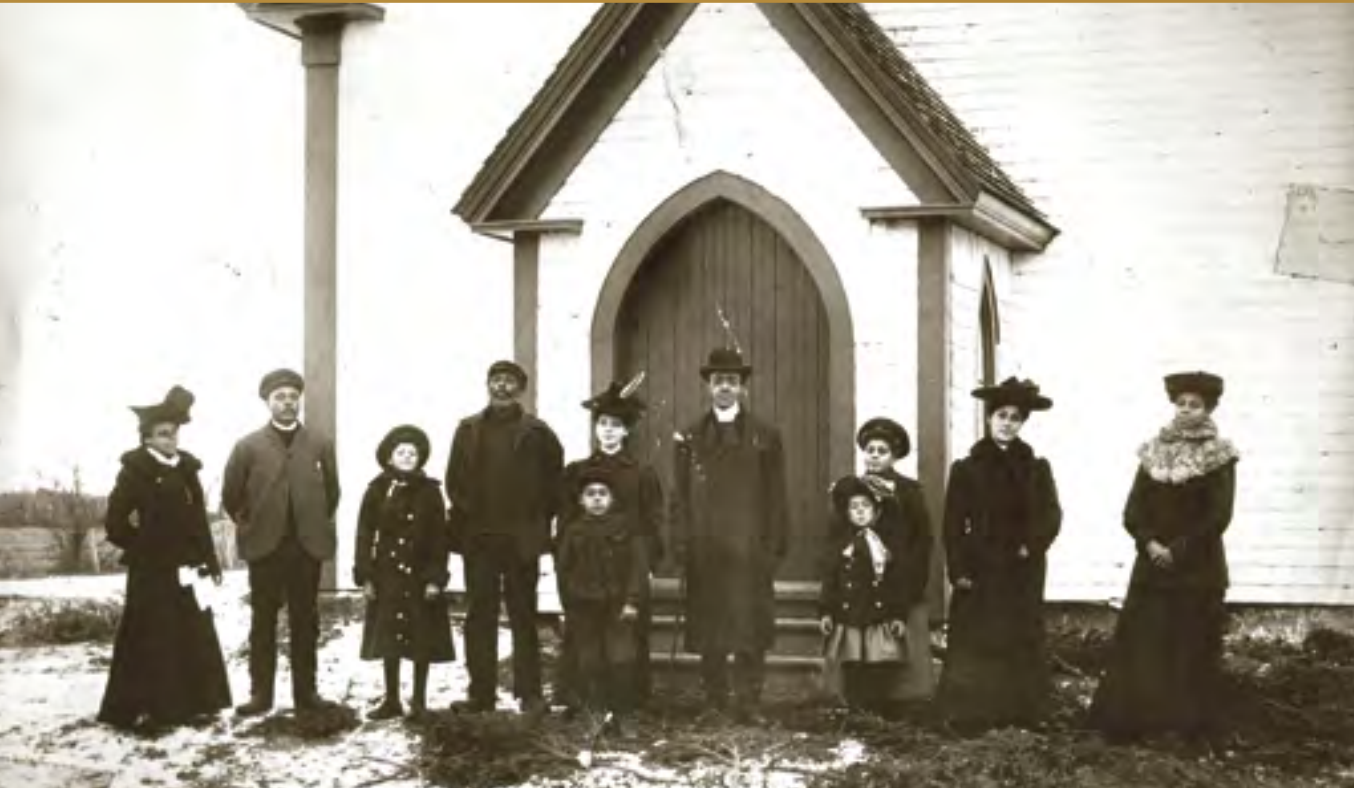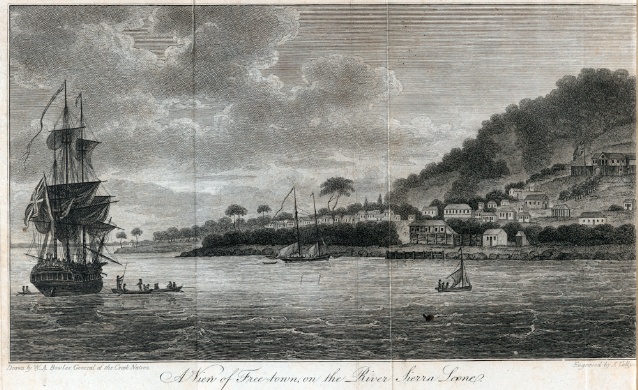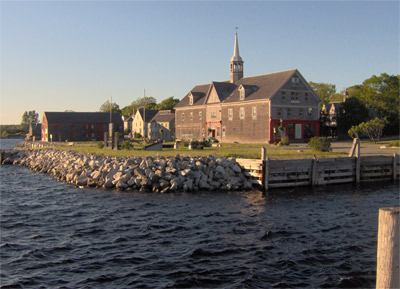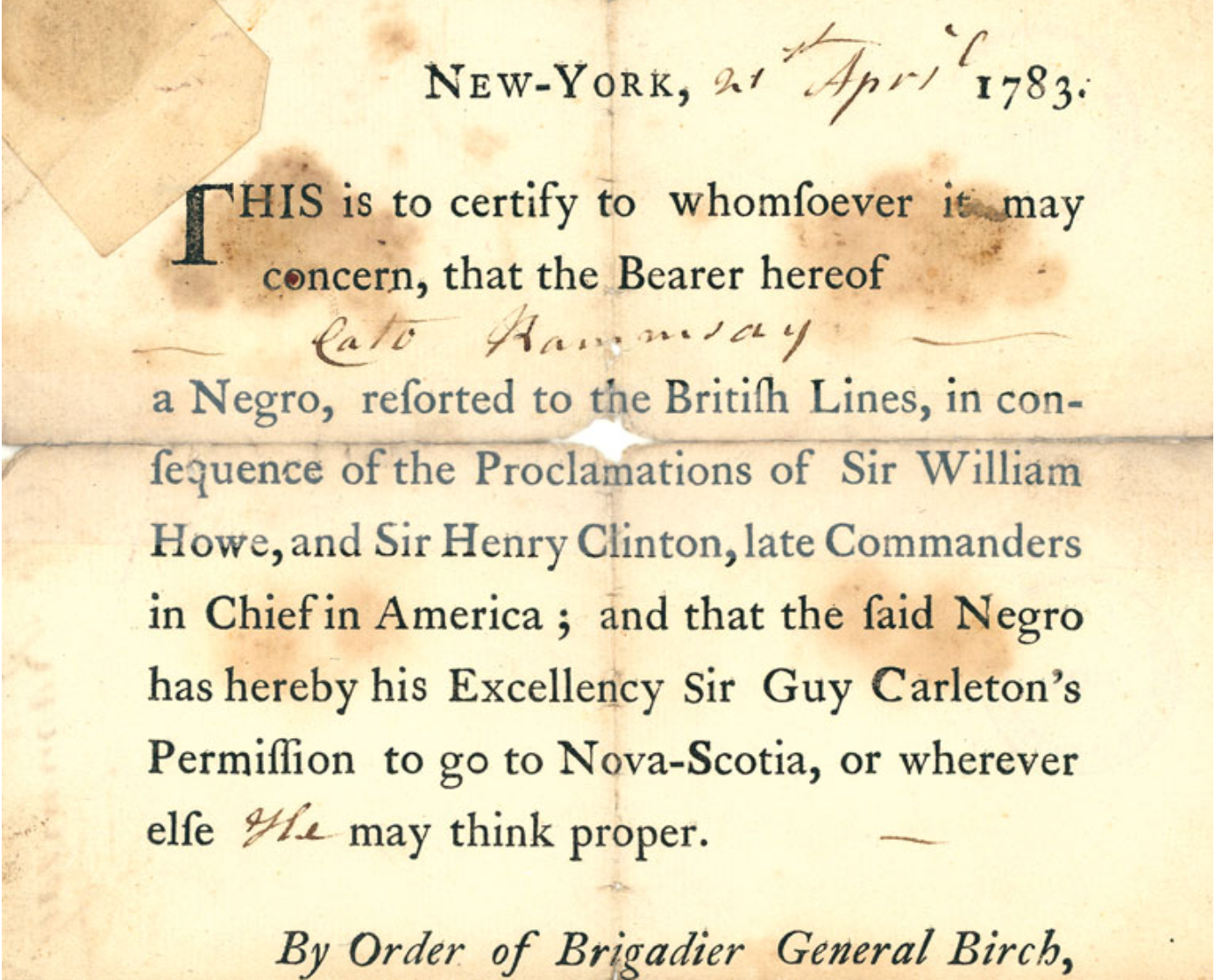|
Moses Wilkinson
Moses "Daddy Moses" Wilkinson or "Old Moses" (c. 1746/47 Wilkinson's entry in the Book of Negroes gives his age as 36. – ?) was an American Wesleyan Methodist preacher and Black Loyalist. His ministry combined Old Testament divination with African religious traditions such as conjuring and sorcery. He gained freedom from slavery in Virginia during the American Revolutionary War, was a Wesleyan Methodist preacher in New York and Nova Scotia. In 1791, he migrated to Sierra Leone, preaching alongside ministers Boston King and Henry Beverhout. There, he established the first Methodist church in Settler Town and survived a rebellion in 1800. Early life Circa 1746, Moses Wilkinson was born enslaved on a plantation in Nansemond County, Virginia. He was enslaved by Miles Wilkinson. Wilkinson was blind and mobility impaired, possibly due to surviving smallpox. He was unable to walk without assistance. Self-liberation The 1775 Dunmore's Proclamation promised slaves of America ... [...More Info...] [...Related Items...] OR: [Wikipedia] [Google] [Baidu] |
Wesleyan Church
The Wesleyan Church, also known as the Wesleyan Methodist Church and Wesleyan Holiness Church depending on the region, is a Methodist Christian denomination in the United States, Canada, the United Kingdom, South Africa, Namibia, Sierra Leone, Liberia, Indonesia, and Australia. The church is aligned with the Wesleyan-Holiness movement and has roots in the teachings of John Wesley. It adheres to Wesleyan-Arminian theology, Wesleyan-Arminian doctrine and is a member of the World Methodist Council. Near the end of 2014, the Wesleyan Church had grown to an average of 516,203 adherents weekly in around 5,800 churches worldwide, and was active in almost 100 nations. In 2017, there were 140,954 members in 1,607 congregations in North America, and an average worship attendance of 239,842. ''Wesleyan Life'' is the official publication. Global Partners is the official non-profit missions organization. The Wesleyan Church world headquarters are in Fishers, Indiana, United States. History ... [...More Info...] [...Related Items...] OR: [Wikipedia] [Google] [Baidu] |
Wesleyan Methodist Church (United States)
The Wesleyan Methodist Church was a Methodist denomination in the United States organized on May 13, 1841. It was composed of ministers and laypeople who withdrew from the Methodist Episcopal Church because of disagreements regarding slavery, church government, and interpretations of the doctrine of entire sanctification, according to the Discipline of the Wesleyan Methodist Connection, although later editions of the Discipline cite only the first two reasons. The first secessions in 1841 took place in Michigan although the new church group was formalized in Utica, New York. In November 1842, Orange Scott, La Roy Sunderland and J. Horton seceded from the Methodist Episcopal Church for reasons given in their publication of the '' True Wesleyan''. The first general conference was held in Utica, NY, in October 1844. The Wesleyan Methodist Church fell into the category of Holiness Methodist Pacifists, as it opposed war as documented in its Book of Disciplines, which stated tha ... [...More Info...] [...Related Items...] OR: [Wikipedia] [Google] [Baidu] |
Methodist Girls High School
Methodist Girls High School, formerly Government Girls Secondary School is a private, all-female high school in Port Harcourt, Rivers State Rivers State, also known as Rivers, is a state in the Niger Delta region of southern Nigeria (Old Eastern Region). Formed in 1967, when it was split from the former Eastern Region, Rivers State borders include: Imo to the north, Abia and Akwa .... It is owned and operated by the Methodist Church Nigeria, Port Harcourt. References Schools in Port Harcourt Girls' schools in Rivers State Christian schools in Nigeria {{RiversState-stub ... [...More Info...] [...Related Items...] OR: [Wikipedia] [Google] [Baidu] |
Freetown, Sierra Leone
Freetown is the capital and largest city of Sierra Leone. It is a major port city on the Atlantic Ocean and is located in the Western Area of the country. Freetown is Sierra Leone's major urban, economic, financial, cultural, educational and political centre, as it is the seat of the Government of Sierra Leone. The population of Freetown was 1,055,964 at the 2015 census. The city's economy revolves largely around its harbour, which occupies a part of the estuary of the Sierra Leone River in one of the world's largest natural deep water harbours. Although the city has traditionally been the homeland of the Sierra Leone Creole people, the population of Freetown is ethnically, culturally, and religiously diverse. The city is home to a significant population of all of Sierra Leone's ethnic groups, with no single ethnic group forming more than 27% of the city's population. As in virtually all parts of Sierra Leone, the Krio language of the Sierra Leone Creole people is Freetown's pr ... [...More Info...] [...Related Items...] OR: [Wikipedia] [Google] [Baidu] |
Los Angeles Times
The ''Los Angeles Times'' (abbreviated as ''LA Times'') is a daily newspaper that started publishing in Los Angeles in 1881. Based in the LA-adjacent suburb of El Segundo since 2018, it is the sixth-largest newspaper by circulation in the United States. The publication has won more than 40 Pulitzer Prizes. It is owned by Patrick Soon-Shiong and published by the Times Mirror Company. The newspaper’s coverage emphasizes California and especially Southern California stories. In the 19th century, the paper developed a reputation for civic boosterism and opposition to labor unions, the latter of which led to the bombing of its headquarters in 1910. The paper's profile grew substantially in the 1960s under publisher Otis Chandler, who adopted a more national focus. In recent decades the paper's readership has declined, and it has been beset by a series of ownership changes, staff reductions, and other controversies. In January 2018, the paper's staff voted to unionize and final ... [...More Info...] [...Related Items...] OR: [Wikipedia] [Google] [Baidu] |
Settler Town, Sierra Leone
Settler Town (Settler Tong in Krio) is the oldest part of the city of Freetown, now the capital of Sierra Leone, and was the first home of the Nova Scotian Settlers. History The Nova Scotian Settlers were African Americans, many of them ex-slaves, who had escaped to British lines during the American Revolutionary War. After the British defeat, they had first emigrated to Halifax, but did not find a warm reception or climate. As a result, on January 15, 1792, Lieutenant John Clarkson led 1,196 of them from Halifax Harbor in fifteen ships across the Atlantic to what is now Sierra Leone on behalf of the Sierra Leone Company. They arrived on March 11 and founded the settlement of Freetown. These newcomers came to be known as the "Nova Scotians" and the "Settlers". During the French Revolutionary Wars, on the night of 27 September or on 28 September, 1794, a French squadron arrived and plundered and destroyed Freetown. The Company's ship ''Harpy'', which had just arrived from Eng ... [...More Info...] [...Related Items...] OR: [Wikipedia] [Google] [Baidu] |
Nova Scotian Settlers
The Nova Scotian Settlers, or Sierra Leone Settlers (also known as the Nova Scotians or more commonly as the Settlers) were African-Americans who founded the settlement of Freetown, Sierra Leone and the Colony of Sierra Leone, on March 11, 1792. The majority of these black American immigrants were among 3,000 African-Americans, mostly former slaves, who had sought freedom and refuge with the British during the American Revolutionary War, leaving rebel masters. They became known as the Black Loyalists. The Nova Scotian settlers were jointly led by African-American Thomas Peters, a former soldier, and English abolitionist John Clarkson. For most of the 19th century, the Settlers resided in Settler Town and remained a distinct ethnic group within the Freetown territory, tending to marry among themselves and with Europeans in the colony. The Settler descendants gradually developed as an ethnicity known as the Sierra Leone Creole people. Loan words in the Krio language and the "b ... [...More Info...] [...Related Items...] OR: [Wikipedia] [Google] [Baidu] |
Sierra Leone Company
The Sierra Leone Company was the corporate body involved in founding the second British colony in Africa on 11 March 1792 through the resettlement of Black Loyalists who had initially been settled in Nova Scotia (the Nova Scotian Settlers) after the American Revolutionary War. The company came about because of the work of the ardent abolitionists, Granville Sharp, Thomas Clarkson, Henry Thornton, and Thomas's brother, John Clarkson, who is considered one of the founding fathers of Sierra Leone. The company was the successor to the St. George Bay Company, a corporate body established in 1790 that re-established Granville Town in 1791 for the 60 remaining Old Settlers. St. George's Bay Company The Sierra Leone Company was the successor to the St. George's Bay Company that had been founded in 1790 following a mostly unsuccessful effort by the Committee for the Relief of the Black Poor in 1787 to establish a free settlement for the "Black Poor" of London, many of whom were Black L ... [...More Info...] [...Related Items...] OR: [Wikipedia] [Google] [Baidu] |
John Clarkson (abolitionist)
Lieutenant John Clarkson (4 April 1764 – 2 April 1828) was a Royal Navy officer and abolitionist, the younger brother of Thomas Clarkson, one of the central figures in the abolition of slavery in England and the British Empire at the close of the 18th century. As agent for the Sierra Leone Company, Lieutenant Clarkson was instrumental in the founding of Freetown, today Sierra Leone's capital city, as a haven for chiefly formerly enslaved African-Americans first relocated to Nova Scotia by the British military authorities following the American Revolutionary War. John Clarkson not only founded Freetown, but was also the first governor of the settlement. Because of his work in establishing Freetown, John Clarkson is considered to be one of the founding fathers of Sierra Leone, alongside Granville Sharp, Thomas Peters, and Henry Thornton. To this day, the last prayer by John Clarkson at Freetown can be found in the houses of Creoles and other Sierra Leoneans alike. To the Nova ... [...More Info...] [...Related Items...] OR: [Wikipedia] [Google] [Baidu] |
Shelburne, Nova Scotia
Shelburne is a town located in southwestern Nova Scotia, Canada. History Shelburne lies at the southwest corner of Nova Scotia, at roughly the same latitude as Portland, Maine in the United States. The Mi'kmaq call the large and well-sheltered harbour ''Logumkeegan'' or ''Sogumkeagum.'' The first Europeans to make a settlement on these shores were the French Acadians. They set up a small fishing settlement known as Port Razoir in the late 17th century, named after the harbour's resemblance to an open razor. Early European settlers had small subsistence farms, but most of the inhabitants' income from that time to the present has been derived from the sea. The Acadian fishing settlement was abandoned after repeated raids from New England colonists during Queen Anne's War in 1705, in which five Acadians were taken prisoner, and again in 1708. Raid on Port Roseway (1715) On May 14, 1715, New England naval commander Cyprian Southack attempted to create a permanent fishing station a ... [...More Info...] [...Related Items...] OR: [Wikipedia] [Google] [Baidu] |
Birchtown, Nova Scotia
Birchtown is a community and National Historic Site in the Canadian province of Nova Scotia, located near Shelburne in the Municipal District of Shelburne County. Founded in 1783, the village was the largest settlement of Black Loyalists and the largest free settlement of ethnic Africans in North America in the eighteenth century. The two other significant Black Loyalist communities established in Nova Scotia were Brindley town and Tracadie. Birchtown was named after British Brigadier General Samuel Birch, an official who helped lead the evacuation of Black Loyalists from New York. Creation Birchtown was first settled by Stephen Blucke, who has been referred to as "the true founder of the Afro-Nova Scotian community". Birchtown was the major settlement area of the African Americans known as Black Loyalists who escaped to the British lines during the American War of Independence. These were Africans who escaped from slavery and fought for the British during the war. The ma ... [...More Info...] [...Related Items...] OR: [Wikipedia] [Google] [Baidu] |
Book Of Negroes
The ''Book of Negroes'' is a document created by Brigadier General Samuel Birch, under the direction of Sir Guy Carleton, that records names and descriptions of 3,000 Black Loyalists, enslaved Africans who escaped to the British lines during the American Revolution and were evacuated to points in Nova Scotia as free people of colour. Background The first African person in Nova Scotia arrived with the founding of Port Royal in 1605. African people were then brought as slaves to Nova Scotia during the founding of Louisbourg and Halifax. The first major migration of African people to Nova Scotia happened during the American Revolution. Enslaved Africans in America who escaped to the British during the American Revolutionary War became the first settlement of Black Nova Scotians and Black Canadians. Other Black Loyalists were transported to settlements in several islands in the West Indies and some to London. Recorded in 1783, this 150-page document is the only one to have recor ... [...More Info...] [...Related Items...] OR: [Wikipedia] [Google] [Baidu] |








